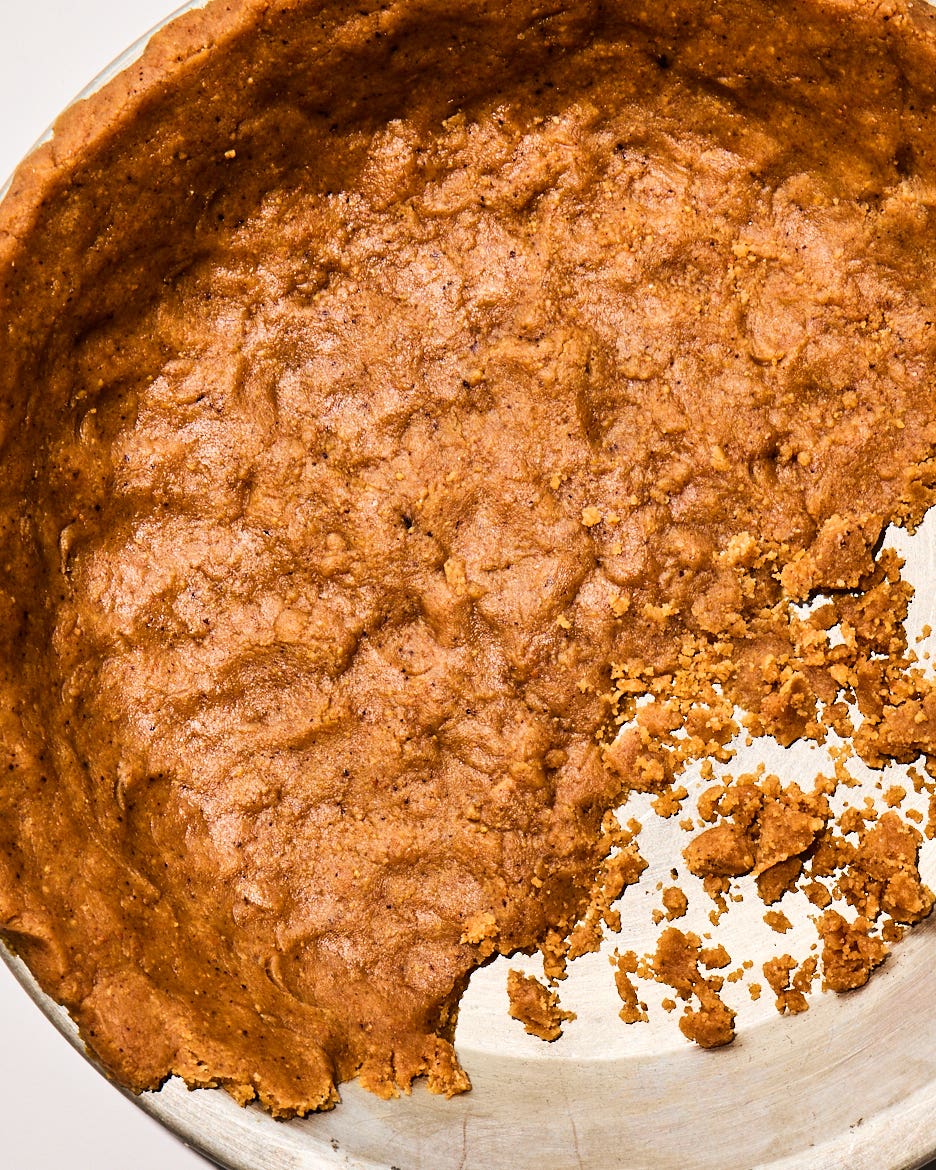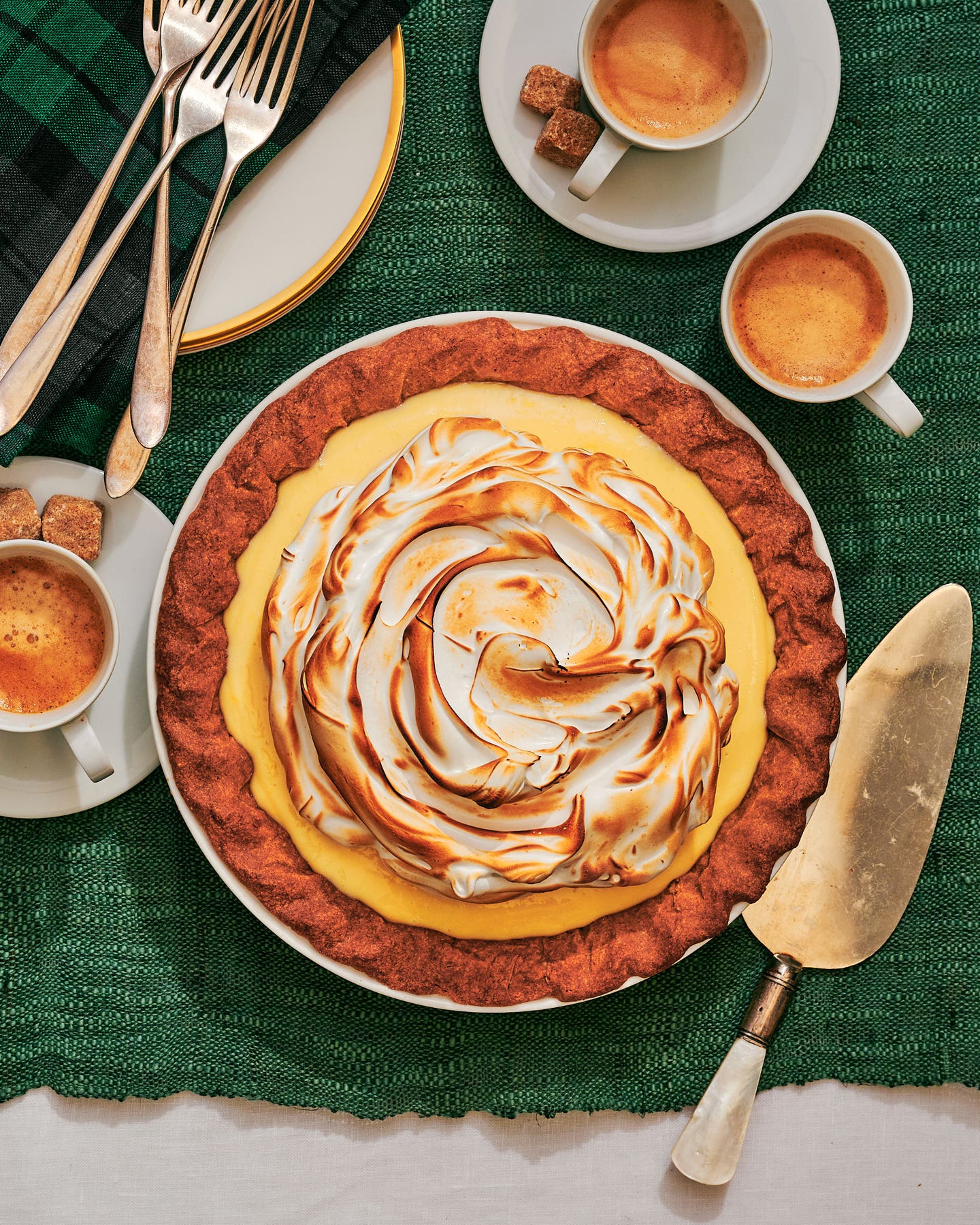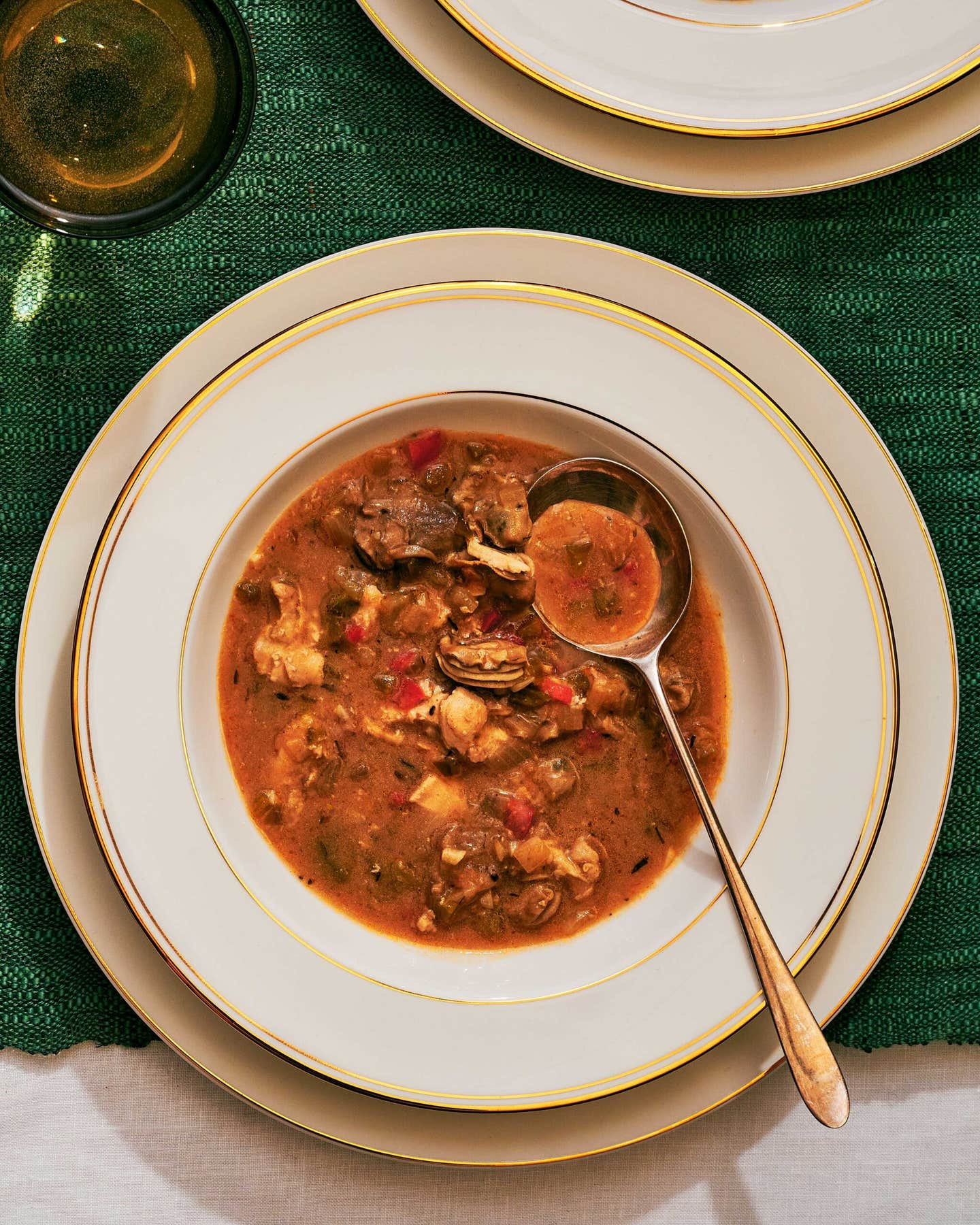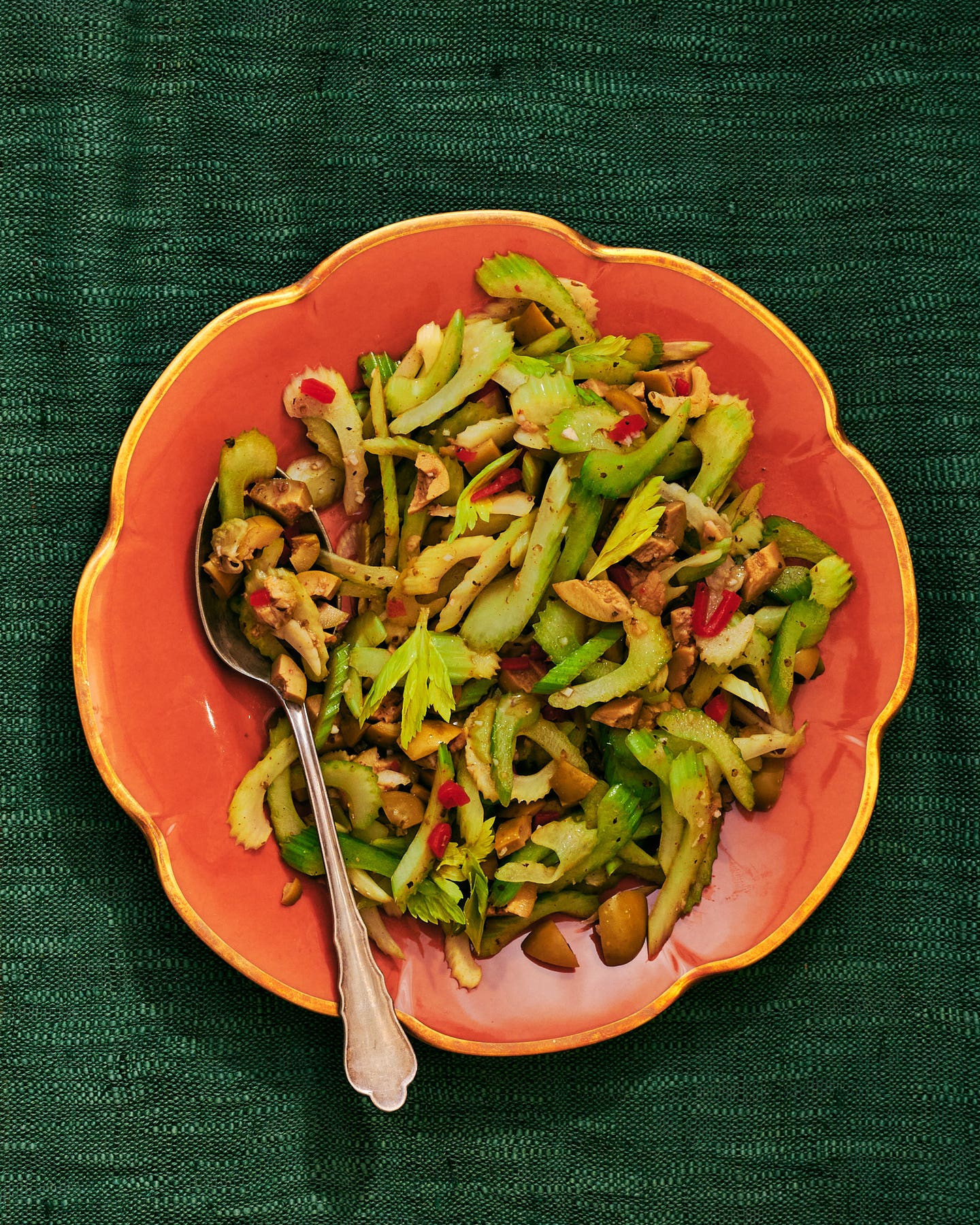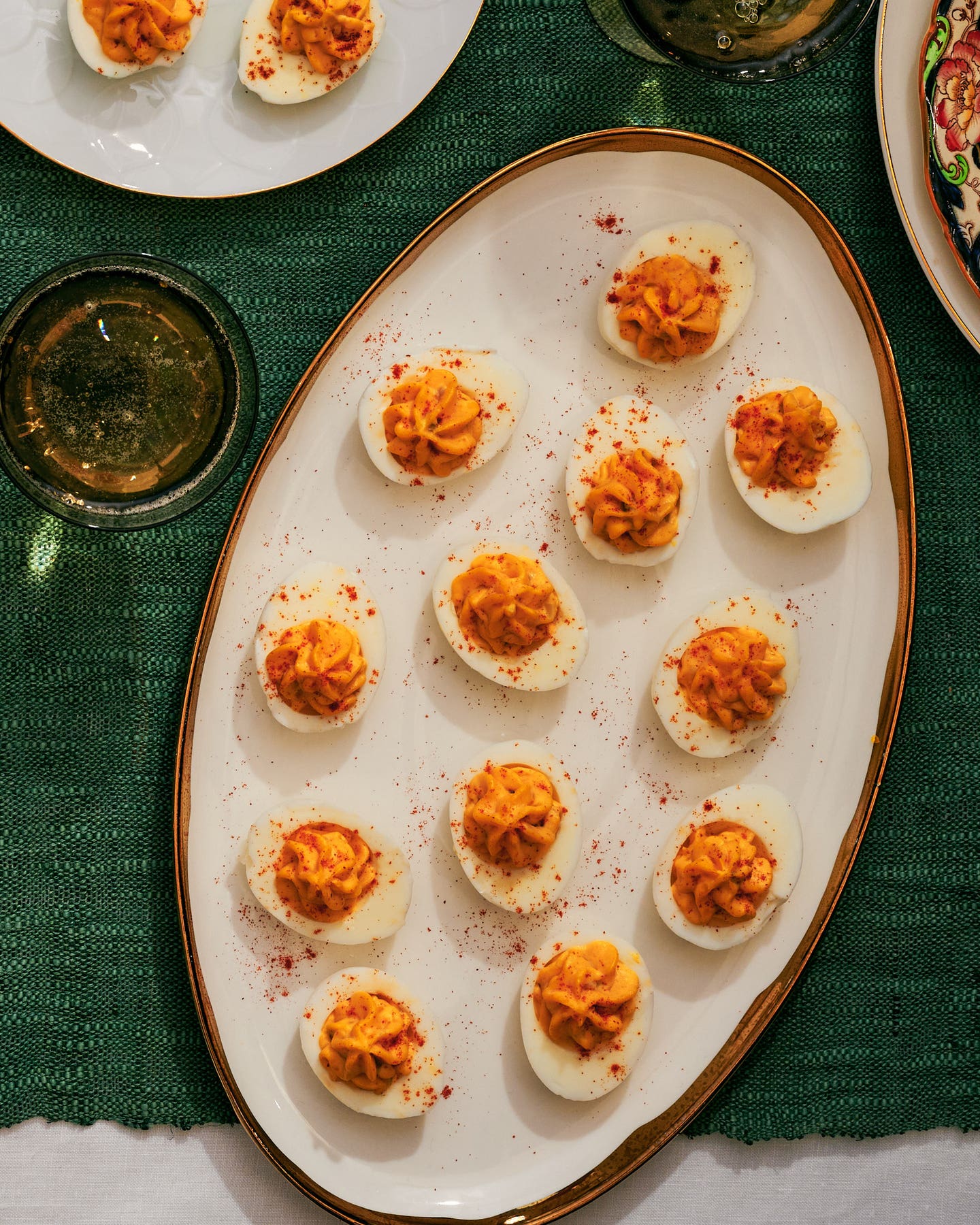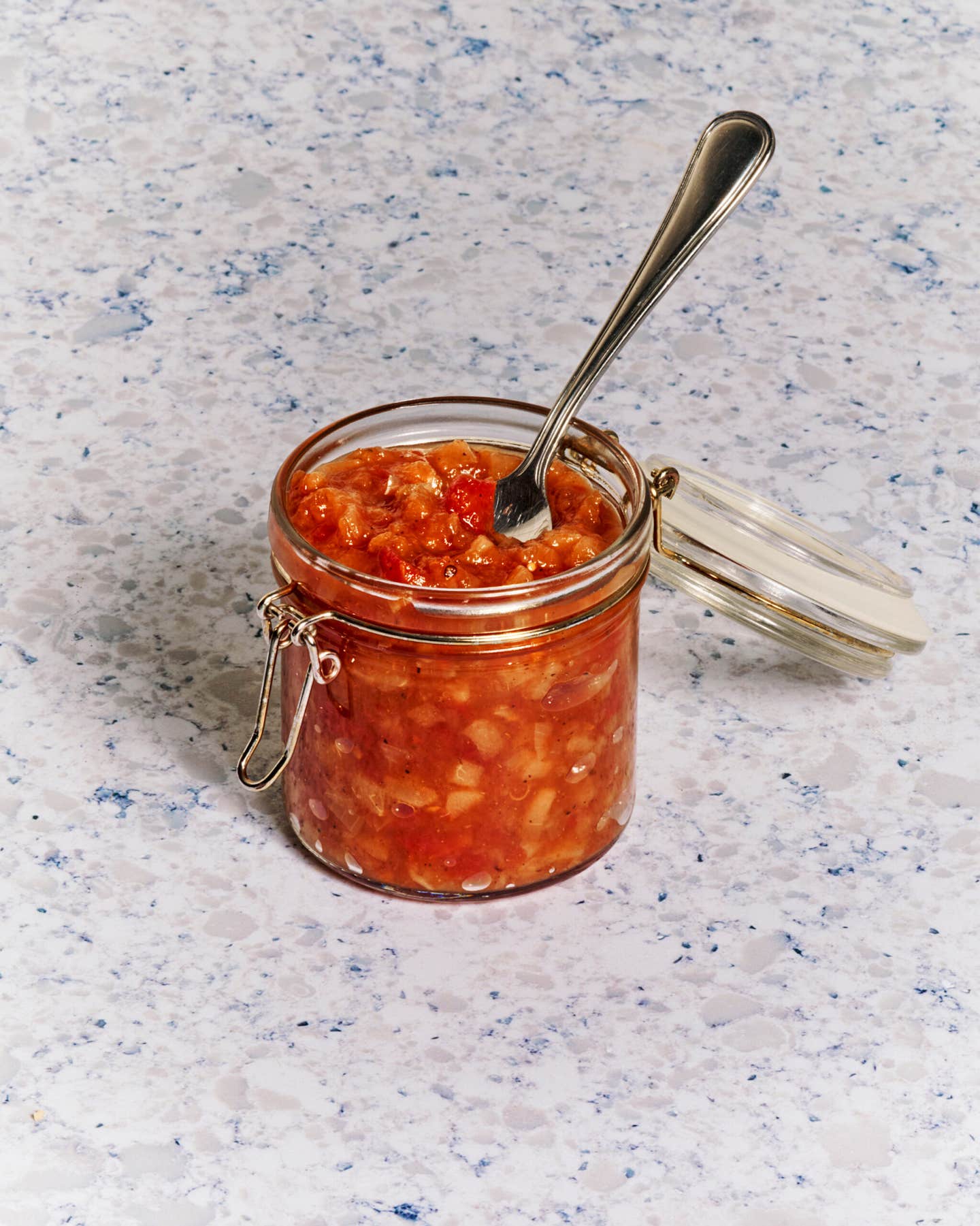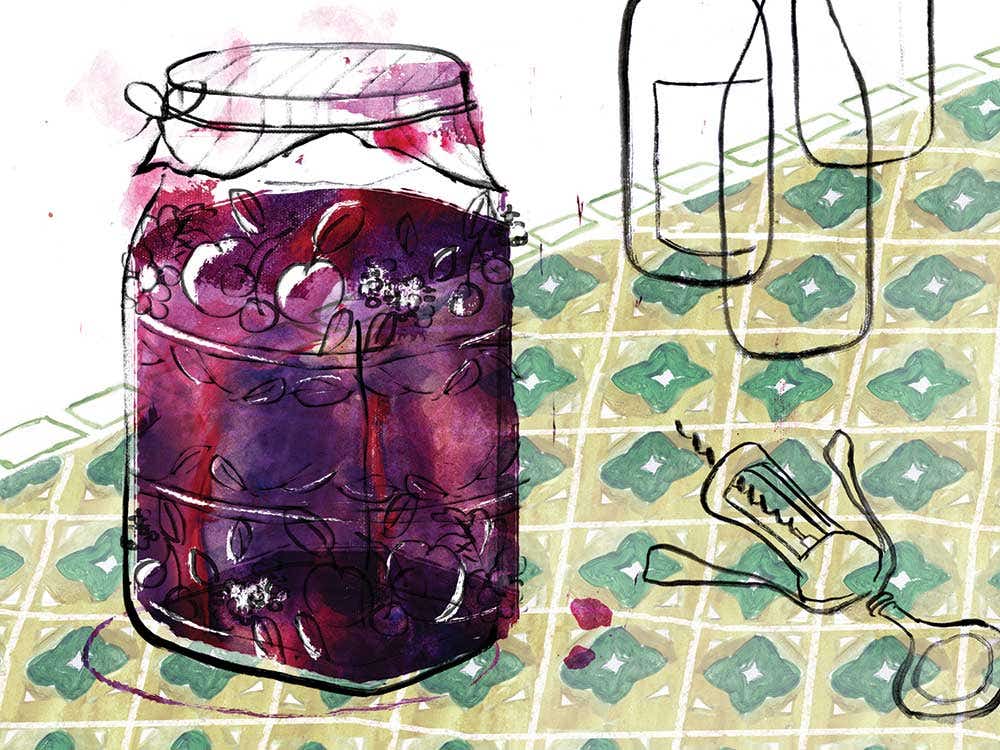
Give the Gift of Homemade Wine Vinegar to Show Your Friends You Care
The formula for vinegar is simple: You need an alcohol, you need oxygen, and you need the presence of bacteria
Every fall, the moment the weather changes, I begin fantasizing about the version of myself who makes Christmas gifts for friends: jars or bottles carefully filled with homemade something, and charmingly labeled with chicken scratch. I’ve put a lot of thought into that perfect homemade gift. It’s planned weeks or months in advance, and it impresses with its thoughtfulness. It can’t be bought. It’s a gift that will be consumed—that disappears, so it doesn’t become an albatross, something the recipient is saddled with and unable to throw away out of guilt. It should be an edible gift that lasts a fairly long time to remind you of my friendship, but doesn’t oppress with its presence or expiration date, demanding you eat it, or filling you with shame when you notice it in the fridge and don’t. And it should be a gift that takes some measure of thoughtfulness and concentrated effort, that makes you think, Ah, Rachel thought about me while making this.
These criteria led me through a brief but intense phase of reading herbal encyclopedias and raiding herb bulk bins to make tinctures as gifts: a cinnamon tincture for a friend with prediabetes (cinnamon lowers blood sugar!), an insomnia tincture for my boyfriend (now husband), Eli, who has trouble sleeping. The tinctures took months to make; I shook the jars of herbs steeping in vodka and shook them diligently every few days to infuse. The tinctures satisfied my criteria for a good gift, but in practice, I could give them to only a handful of friends with specific ailments—namely, those two. Most years, I’m ashamed to say, despite my best intentions, I never make it past the conceptual phase of gift giving. Life gets hectic. The window of time it takes to make that homemade thing gets smaller and smaller until it disappears.
Recently, I was sitting in my kitchen, idly reading the back of a vinegar bottle, when something caught my eye. The label said the vinegar was brewed using the “Orleans method” of vinegar making. This was no ordinary bottle of vinegar; it was my favorite vinegar, made by a company called Katz. Based in Napa, California, Katz makes artisanal vinegars so delicious and complex—they have a residual sweetness and add intriguing depth to salads—that when I moved away from California for a short spell, I could find no equal and mail-ordered them out of desperation.
As I sat in my kitchen, the wheels in my head immediately began to turn. Everyone uses vinegar! Vinegar lasts a long time, but not forever. If I made vinegar at home using this traditional, slow method, it would be far superior than any vinegar one’s loved one could readily purchase in a store (except for, well, Katz vinegar). The image sprang immediately to my mind: my small barrel sitting in my apartment, containing a year’s worth of one-of-a-kind Christmas gifts for all my friends, branded khong.
I was champing at the bit to buy my barrel before it occurred to me that I should probably consult expert vinegar makers on just how feasible this project would or wouldn’t be. So I called the man behind the vinegar, Albert Katz himself, to ask for advice. Back in the 1980s and early ’90s, Katz was a Bay Area chef influenced by Alice Waters and the Slow Food movement. “We didn’t have any real domestically produced vinegar,” Katz explained. “The traditional methods just weren’t being used anymore, or very often.” One thing led to another, and Katz began making his own. And what makes Katz’s vinegar so good? A traditional, unhurried fermentation followed by aging. “We extract a lot of flavor from our vinegars,” Katz explains. “I want vinegar to be seen as something more than just acid, something that has nuances of flavor.”
This way of making vinegar is achievable by anyone. “For the person who’s making it just for their home, they have a lot of latitude because they can focus on quality,” rather than speed and efficiencies of scale, explains Lawrence Diggs, who runs both the website vinegarman.com and the International Vinegar Museum in Roslyn, South Dakota. He’s also the author of Vinegar: The User-Friendly Standard Text Reference and Guide to Appreciating, Making, and Enjoying Vinegar. “If you drink a certain kind of wine, that can become your house vinegar,” Diggs says, “and it will give a signature to your food.”
The formula for vinegar is simple: You need an alcohol, you need oxygen, and you need the presence of bacteria—called Acetobacter—that turn that alcohol into acetic acid. By flushing wine with oxygen using centrifugal pumps (not unlike the device gurgling away in an aquarium), and keeping the wine at a high temperature, commercial vinegar makers can transform wine in just a day. The Orleans method, by contrast, is slow. It’s named after the town of Orléans, France, on the Loire River. When wine soured on the boat trips there, the Orléanais turned it into vinegar, and Orléans became a vinegar center.
According to Diggs, making vinegar is relatively easy, and largely hands-off—in other words, a good contender for my ideal made-lovingly-at-home-yet-not-excessively-complicated gift. “Wine, beer, most alcoholic beverages want to be vinegar.” And he adds, with a laugh: “Many people who call themselves winemakers are actually better vinegar makers. Wine is primed for making vinegar, and all you have to do is keep it like that—keep a clean atmosphere, don’t let rats fall in.”
Vinegar is easy to make, but it’s not always simple. The fermentation should happen slowly, but not too slowly, which gives acetic acid the chance to chemically react with alcohol and form ethyl acetate, a chemical that smells like nail polish. Mold can flourish, as can vinegar flies and worms (also called vinegar eels, disgustingly). Sulfites, added to wine as a preservative, to slow the transformation of wine to vinegar, can be a problem if vinegar is what you want. Katz says it’s not all that straightforward, and he arrived at his techniques after years of trial and error. Diggs, though, is encouraging. “It’s such a cheap date,” he says. “If you fail, don’t worry about it. Try it again.”
As for my dreams of creating my signature vinegar in a personalized oak barrel, both Diggs and Katz were unequivocal: There is no need to purchase a barrel to make or store vinegar. “Does it add flavor? No,” Katz explains. “We get old barrels from wineries that are pretty well neutral.” About barrels, Diggs tells me, “it wasn’t because it was the best thing to do, it was the best thing that they had.” They both recommend nonorganic vessels for the home vinegar maker.
Thus advised, I set about making my own vinegar. I bought sulfite-free wine and glass jars. I secured paper towels over the top of my jars (Diggs says fruit flies can get in through cheesecloth) and said a prayer to ward off vinegar eels. My jars are now sitting in the linen closet—waiting, like me, to become their very best selves.

Keep Reading
Continue to Next Story

